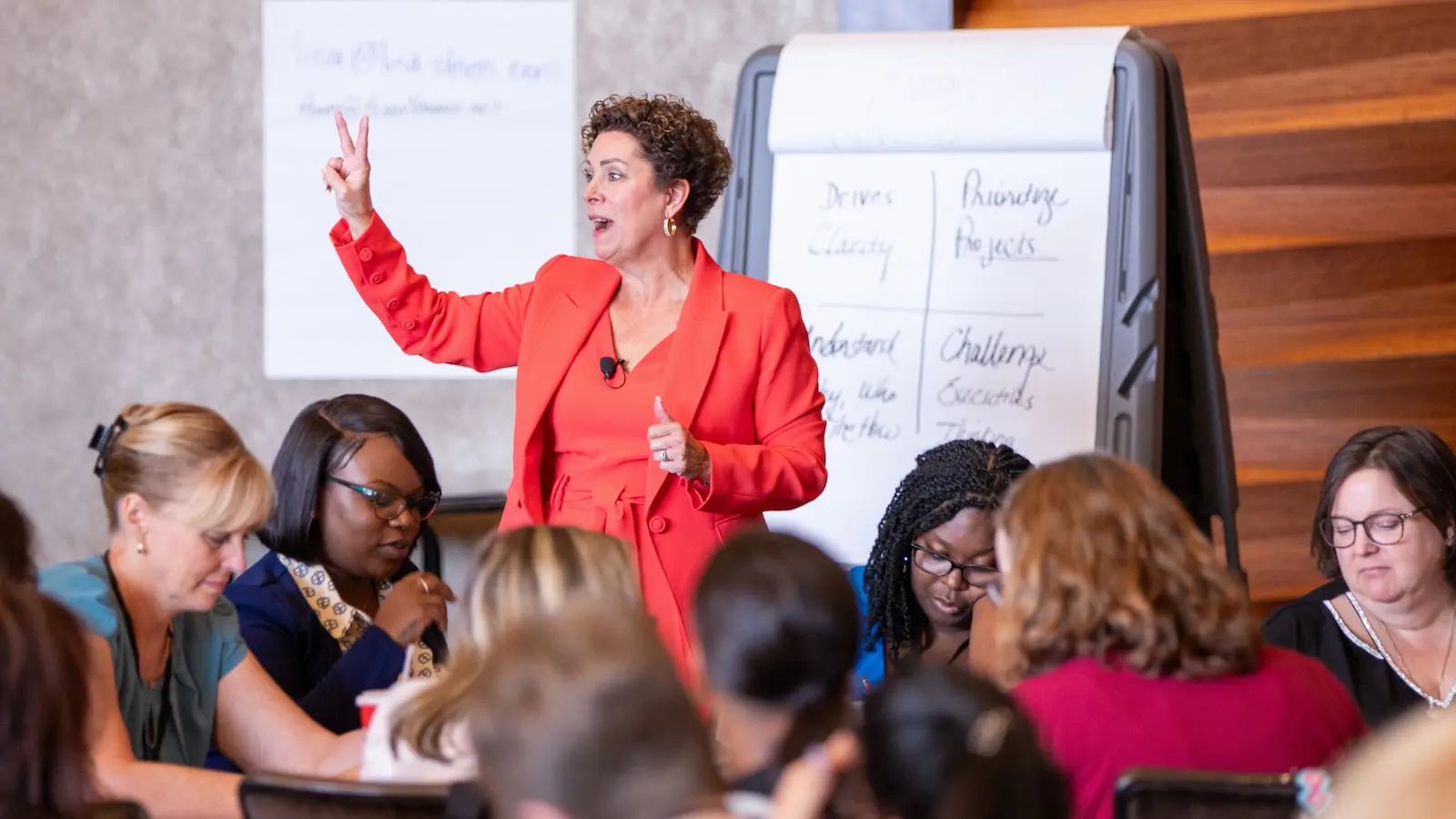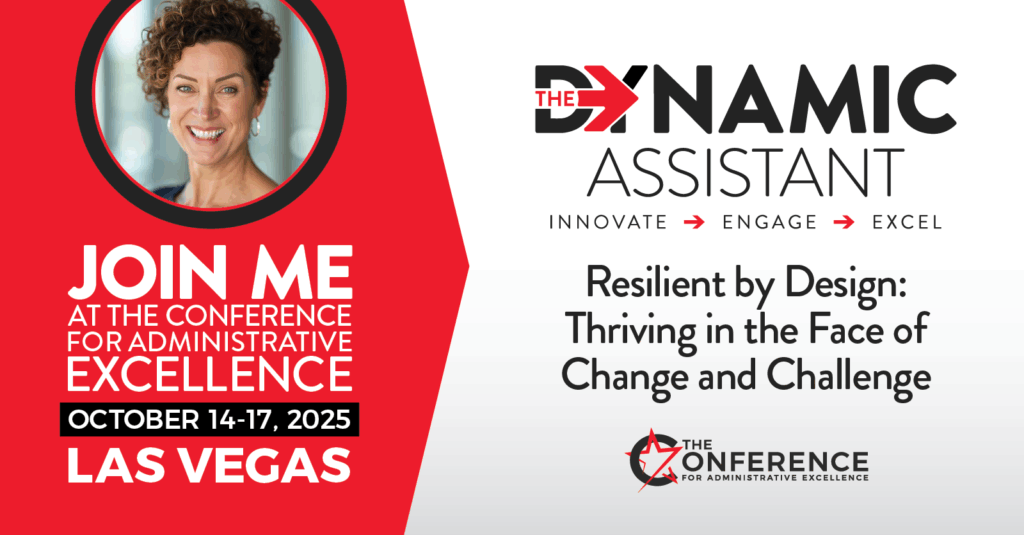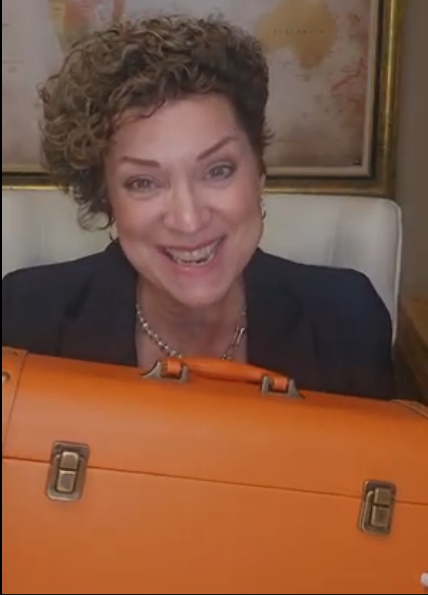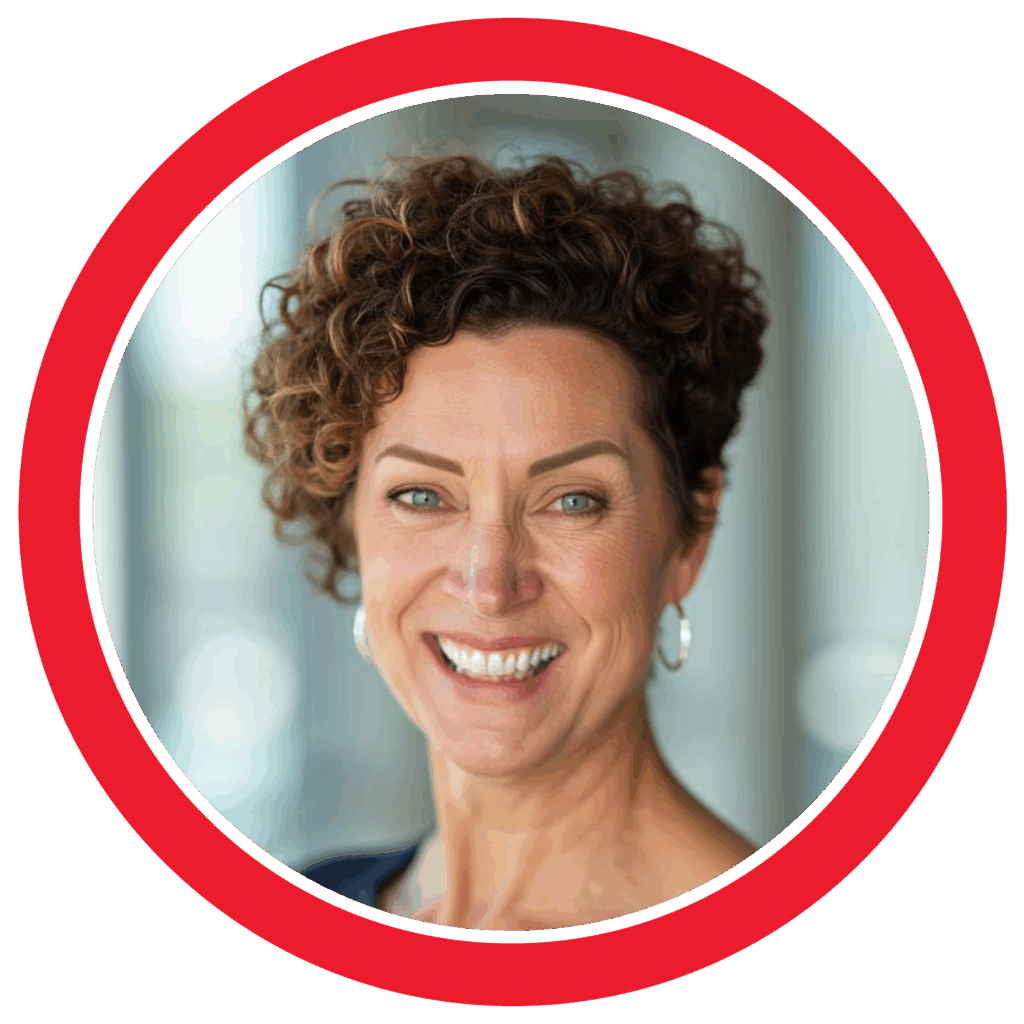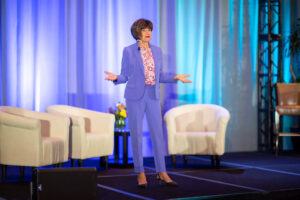In conversations with administrative professionals across the globe, I hear familiar themes:
- “I’m stretched too thin.”
- “I’m trying to stay calm, but I’m overwhelmed.”
- “I’m doing everything I can—but somehow, it still doesn’t feel like enough.”
That’s what led me to create something I now call:
The Resilience Equation:
Resilience = Flexibility in Motion + Emotional Mastery + Forward-Minded Leadership
This equation isn’t just theory. It’s what I’ve seen play out in real life again and again. Let’s break it down:
1. Flexibility in Motion
This is your ability to pivot without panic. When plans shift – and they always do – you adapt, stay focused, and take the next best step.
Like the assistant whose executive got pulled into a last-minute media interview with less than 20 minutes’ notice, she adjusted the schedule, prepped briefing notes, grabbed water – and met him at the door with calm confidence. No drama. Just action.
2. Emotional Mastery
This is the space between stimulus and response – and what you choose to do with it.
I’ll never forget the toughest review of my career. I was stunned. Upset. Defensive.
But thankfully, instead of reacting, I called a trusted mentor. Her guidance helped me move past my emotions and into an opportunity for growth. I scheduled time to discuss the review with my executive. Before we met, I took time to breathe, prepare clarifying questions, and shifted my mindset to curiosity. Guess what? It completely shifted the conversation, and I left the meeting with clear actions I could take to step up my game.
Real leadership starts with feedback – and grows when you put it into practice.
3. Forward-minded Leadership
This is how you lead without waiting to be asked. You see what’s needed – and take action.
One client I coached documented a brand-new process during a tech rollout. No one assigned her the task. But her notes became the go-to reference for the entire team, and her initiative didn’t go unnoticed.
This kind of leadership isn’t about having a title – it’s about having the mindset to lead, regardless of where you sit.
Each part of the resilience equation helps you make better decisions under pressure, and lead yourself (and others) with confidence.


